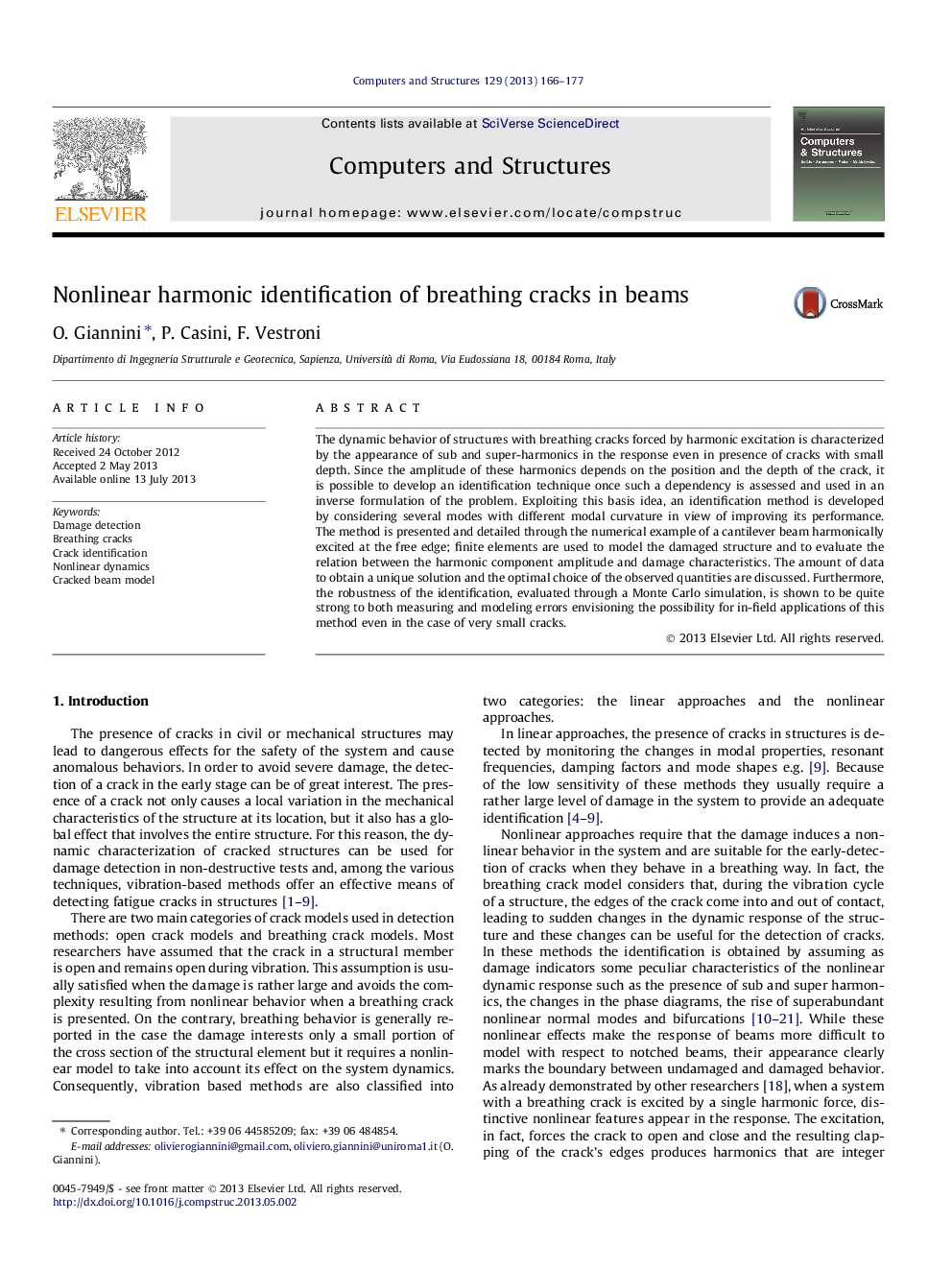| Article ID | Journal | Published Year | Pages | File Type |
|---|---|---|---|---|
| 509833 | Computers & Structures | 2013 | 12 Pages |
•A method for the identification of breathing cracks in beams is detailed through FE simulation.•Sub- and super-harmonics of the dynamic response are used as damage indicators.•The method is effective for very small cracks.•The performance is improved by considering several modes with different modal curvature.•The robustness of the method, evaluated through a Monte Carlo simulation, is quite strong.
The dynamic behavior of structures with breathing cracks forced by harmonic excitation is characterized by the appearance of sub and super-harmonics in the response even in presence of cracks with small depth. Since the amplitude of these harmonics depends on the position and the depth of the crack, it is possible to develop an identification technique once such a dependency is assessed and used in an inverse formulation of the problem. Exploiting this basis idea, an identification method is developed by considering several modes with different modal curvature in view of improving its performance. The method is presented and detailed through the numerical example of a cantilever beam harmonically excited at the free edge; finite elements are used to model the damaged structure and to evaluate the relation between the harmonic component amplitude and damage characteristics. The amount of data to obtain a unique solution and the optimal choice of the observed quantities are discussed. Furthermore, the robustness of the identification, evaluated through a Monte Carlo simulation, is shown to be quite strong to both measuring and modeling errors envisioning the possibility for in-field applications of this method even in the case of very small cracks.
